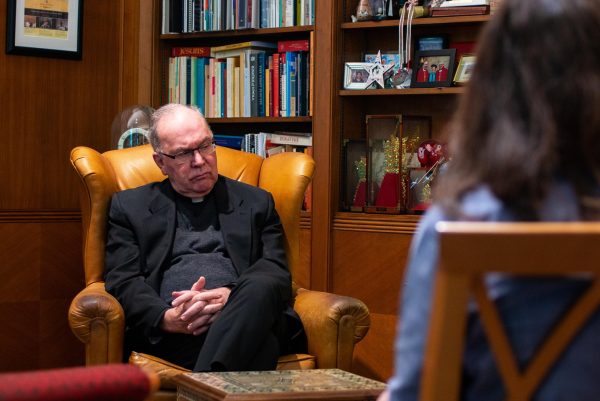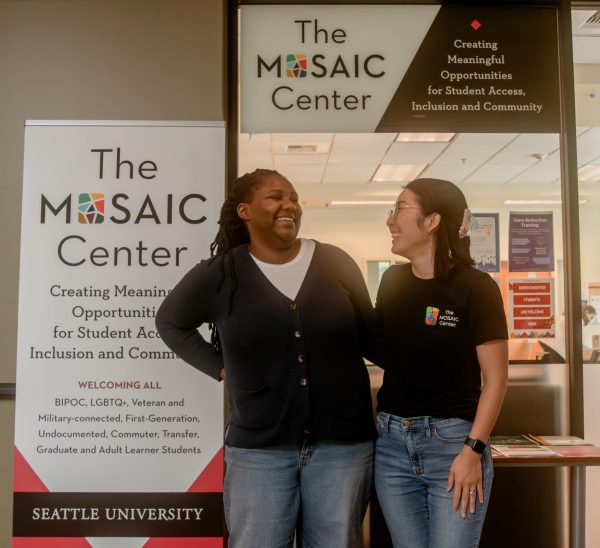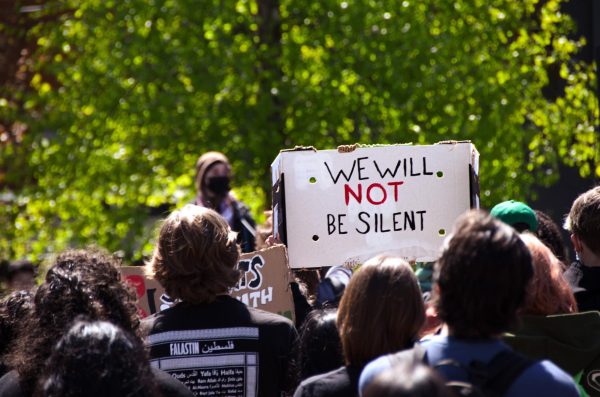State of California Lifts Stay-at-Home Order as Many Question its Legitimacy Amid Ongoing COVID-19 Pandemic

California Governor Gavin Newsom announced that he will lift the statewide stay at home order Jan. 25, which called for stricter restrictions on nonessential businesses and a curfew for all state residents.
Newsom also reintroduced the colored four-tier system to track and differentiate the level of restrictions that must be applied for each county. The status of each county directly correlates to their ICU capacity, as well as the number of new COVID-19 cases and the rate at which people test positive.
The color-coded system utilizes purple to indicate that the virus is widespread, with an infection rate of over seven new cases per 100,000 residents on a daily basis. Counties in red have a ‘substantial’ infection rate between five to seven new daily cases per 100,000 residents. Tier three, orange, indicates a ‘moderate’ at between 2-4.9 percent positivity rate. The yellow tier, which indicates ‘minimal’ virus spread, must be less than one daily new case per 100,000 residents.
Previous versions of the system also featured a blue ‘stay at home’ tier, which signaled that ICUs in that county had a capacity below 15 percent. However, it was dropped after Newsom called for a regional, mandatory stay at home order in December. Many California residents expressed mixed reactions with Newsom’s decision to choose to reopen the state at this time—despite the reopening’s purported economic benefits.
Seattle University student and Nursing major Hannah Han spent her winter break in her El Dorado County home in California. As one of the few students with mandatory in-person courses, she knew she would return to Seattle U for winter quarter for lab-based nursing courses. Her rural California experience did not necessitate much close interaction with others, but it also allowed her more freedom, even with the stay home order in place.
“Some of the government policies, the police station said they weren’t going to enforce,” Han said.
According to Han, the El Dorado sheriff’s office was one of several counties that said they would not be enforcing the curfew as part of the stay home order.
Now that she has returned to Seattle, Han’s freedom has more limitations. When entering campus—which, for Han, is a minimum of six times per week—she must fill out Seattle U’s online health screening tool, Safe Start Health Check. She is also expected to take weekly COVID-19 tests, as well as abide by social distancing standards that emphasize “no intermingling” among students living on campus.
Leanna Sommer, a resident of Sacramento County and second-year at Sacramento State University, had her work hours cut in half after the dance studio where she taught closed its doors for in-person instruction. The studio’s closure was a direct result of being classified as a nonessential business.
The studio has reopened three times since the COVID-19 pandemic began, having to close multiple times following either a change in county status or another modification in restrictions for nonessential businesses. She believes that, while restrictions on nonessential businesses have dropped once more, reopening the studio is not worth the risk of disappointing clients if there are further changes down the line.
“I think this would be the fourth time that we’d be reopening again just to close,” Sommer said. “Now, if we reopen the fourth time, I think there will be less people coming back right away because they’re worried about us closing again, so I think it impacted their faith [in us].”
Living in California, Sommer has also borne witness to the casual way in which residents of her county approach COVID-19 restrictions. She feels that residents’ behavior is unlikely to change, as, in her experience, none of Newsom’s orders have ever been strictly enforced.
Seattle U student and Mathematics major Debangi Choudhuri had a similar experience, though she currently resides in Southern California with her family after Seattle U closed the doors to its residence halls in March 2020.
Choudhuri is considering returning to Seattle for the 2021 spring quarter, however, due to concerns about how seriously her peers and community members follow COVID-19 guidelines is hesitant.
Her county only has two major locations to receive the vaccine. Although her town is in close proximity to Los Angeles, the nation’s newest COVID-19 hotspot, she has also witnessed retail stores, malls and other nonessential businesses remain open in some capacity and with few limitations throughout nearly the entire course of the pandemic.
“Our priorities are different in each state. I think California seems more concerned with leisure and self-enjoyment, because we’re seeing malls open and people at retail stores all the time, versus in Seattle, I think they’re more focused on community care and trying to eliminate the virus,” Choudhuri said.
Choudhuri also reported seeing peers hanging out with large groups of friends in close proximity, and even visiting Los Angeles and other nearby areas for short day trips.
“It’s one thing to be selfish, but it’s another thing when that selfishness affects your community,” Choudhuri said.
Rowan Cuadrado is another one of many California residents attending Seattle U who has chosen to return for the winter quarter amid the pandemic. Living in Ventura County, a suburban area, Cuadrado experienced a “mixed bag” with levels of enforcement and the regulations imposed by businesses varying. By comparison, Seattle’s population density requires residents like Cuadrado to consistently “stay aware” and take serious precautions at all times.
“COVID-19 restrictions are a little more flippant at home rather than here in the city of Seattle,” Cuadrado said. “It’s dense in the city, so if anybody is going out, you can’t exactly distance yourself from zero contact.”
Meanwhile, Washington’s efforts to keep COVID-19 at bay can be traced back to King County, and especially Seattle’s, history as a virus hotspot in March 2020. The state is currently in the middle of redoubling efforts to fight COVID-19, as Governor Inslee announced that Washington would begin following a newly developed regional, two-phase plan called the Road to Recovery. The metrics for this plan, which are more stringent than California’s, require counties to prove a decreasing trend of less than 10 percent of daily COVID-19 cases, new cases and an ICU occupancy level of below 90 percent.
All of the above metrics must be met in order for a county to be moved to Phase 1. Staying within that phase will require counties to keep up with their ICU occupancy rate of below 90 percent and show either a decreased or flat trend of new COVID-19 cases and/or COVID-19 related hospital admissions.
Forensic Science major Braeden Camarota recently returned from his San Jose home for the winter quarter, where he had stayed with his parents. Prior to winter break, Camarota spent most of the 2021 school year in Seattle, returning only briefly for a single weekend during the fall quarter. Reflecting on his time back home, he noticed that Bay Area residents expressed a level of flippancy he had not seen before in regards to following COVID-19 restrictions.
“Even though I feel like there’s more people in Seattle…I feel like there were more people out and about [in California],” Camarota said.
He also noticed groups of people hanging around frequently and chatting, unmasked.
“It was very clear they were not all from the same household,” Camarota added of people he noticed out and about in California.
Camarota also worried about the state of his parents’ metal distribution business. As small business owners, they had to adapt to the safety guidelines for all businesses and their employees, including making space for employees to follow social distancing rules and limiting interaction with customers in their warehouse. Though they were able to work through the course of the pandemic thus far, the lack of a stay-at-home order will still require adjustments to personal and professional lives alike.
“They’re a small business, so as you can imagine, the bottom line can be a bit tight sometimes,” Camarota said.
Placer County resident and Sierra College student Joshua Briscoe has flip-flopped between his hometown in California and his month-long stay with a relative in Washington. He found Washington’s lockdown to be stricter than what he experienced in Roseville. Additionally, Briscoe believes that Newsom’s blanket decision to level the stay at home order may prove harmful to regions facing different levels of outbreaks.
“I don’t think we should impose the same rules in all of California. I think the COVID-19 situation in San Francisco and Los Angeles is very different from the COVID-19 situation in Redding,” Briscoe said.
As California continues to shift its protocol measures amid various counties and populations of people, Seattle U students both near and far feel the repercussions of such. After all, California is the top state that makes up the incoming out-of-state student body, and also one which has dealt with large quantities and spikes in COVID-19 cases as the pandemic surges on into 2021.










